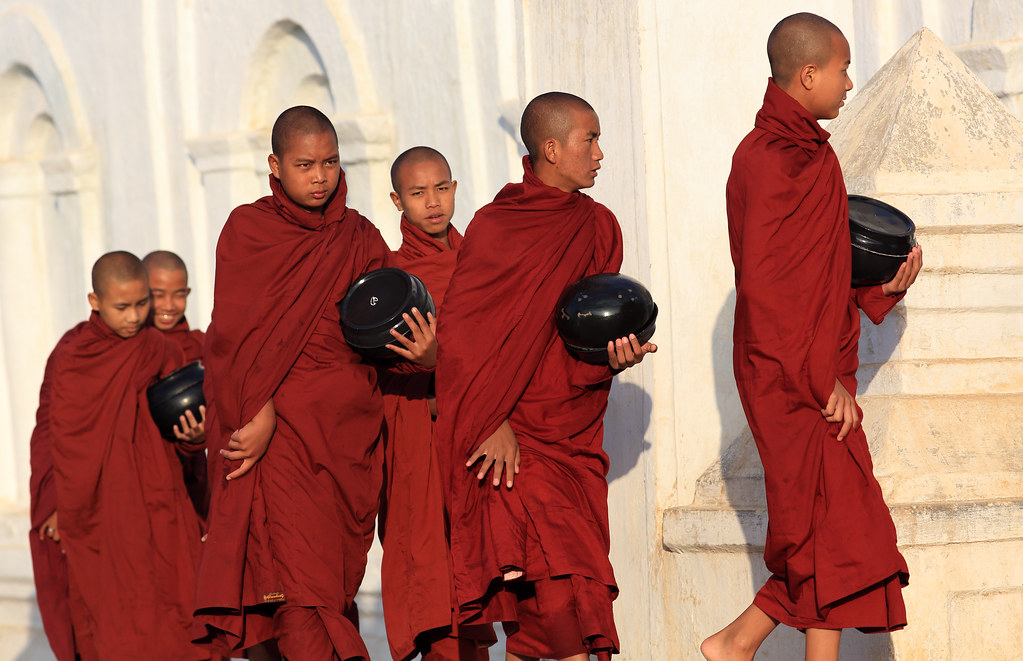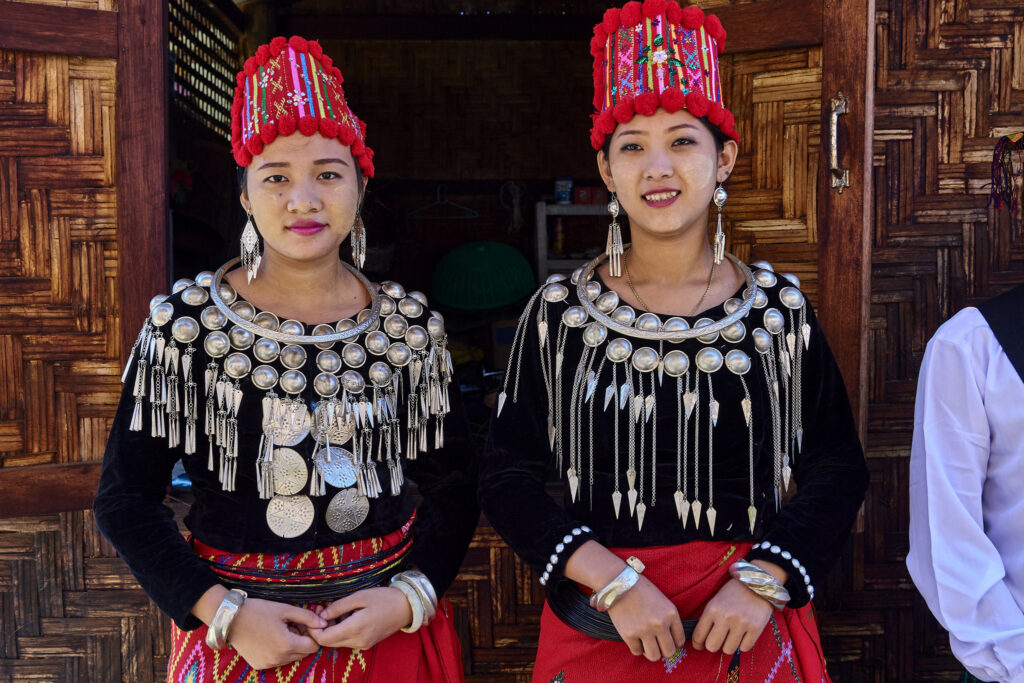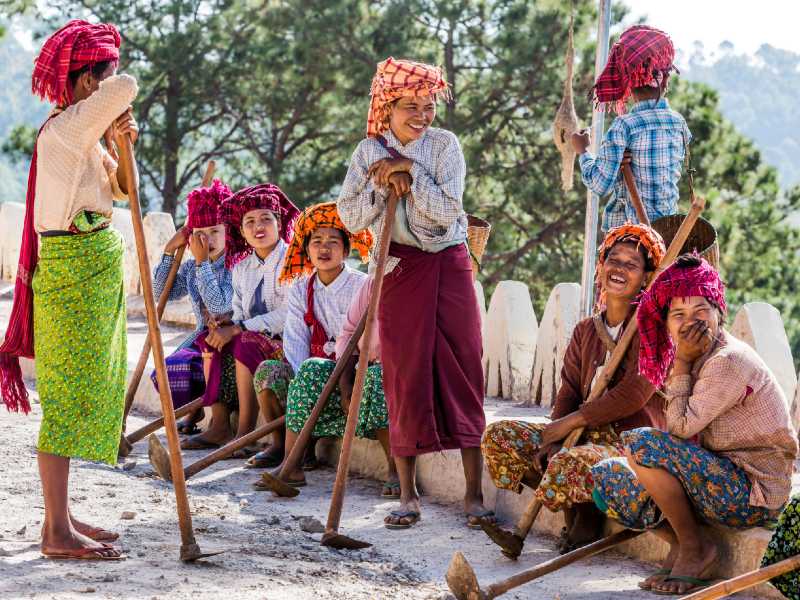COMMUNITIES- BURMA (OFFICIALLY MYANMAR)
BURMESE CULTURE
Burma is the largest country in Mainland Southeast Asia with a population of about 55 million.

Religion strongly influences life in Burma. Buddhism is the main religion (around 90% of population).
Monks are well respected throughout the country. Buddhist pagodas, temples and monasteries can be found everywhere from smallest villages to the largest cities. Many of the festivals celebrated in Burma are related to Buddhism. The pagoda festival is considered the most important one.
Shinbyu is another very important ceremony for Myanmar people, marking a young boy’s journey of becoming a monk. Parents want their children to enter the temple and become a monk because they believe that the family will become blessed.

Burma is Southeast Asia’s most ethnically diverse country, home to about 135 distinct ethnic minority groups.
Bamar, Chin, Kachin, Kayin, Kayah, Mon, Rakhine and Shan are the eight major national ethic races. The smaller ethnic groups scatter mostly in the northern hills and the western border. A large portion of ethnic minorities are former refugees from Tibet and China. Thai people also live seasonally in Burma and work along the locals.
The Kachin are pictured to the left.

In Myanmar, most men and women wear a skirt called “Longyi”. Longyi is a long sheet of cloth wrapped to be right below the naval. Flip-flops are also wore everywhere, from daily errands at the market to formal meeting.
Younger generations normally dress in more Western styles.
Makeup consists of Thanaka paste, which is made from ground bark, and utilized as a sunscreen, acne treatment, and skin softener.
